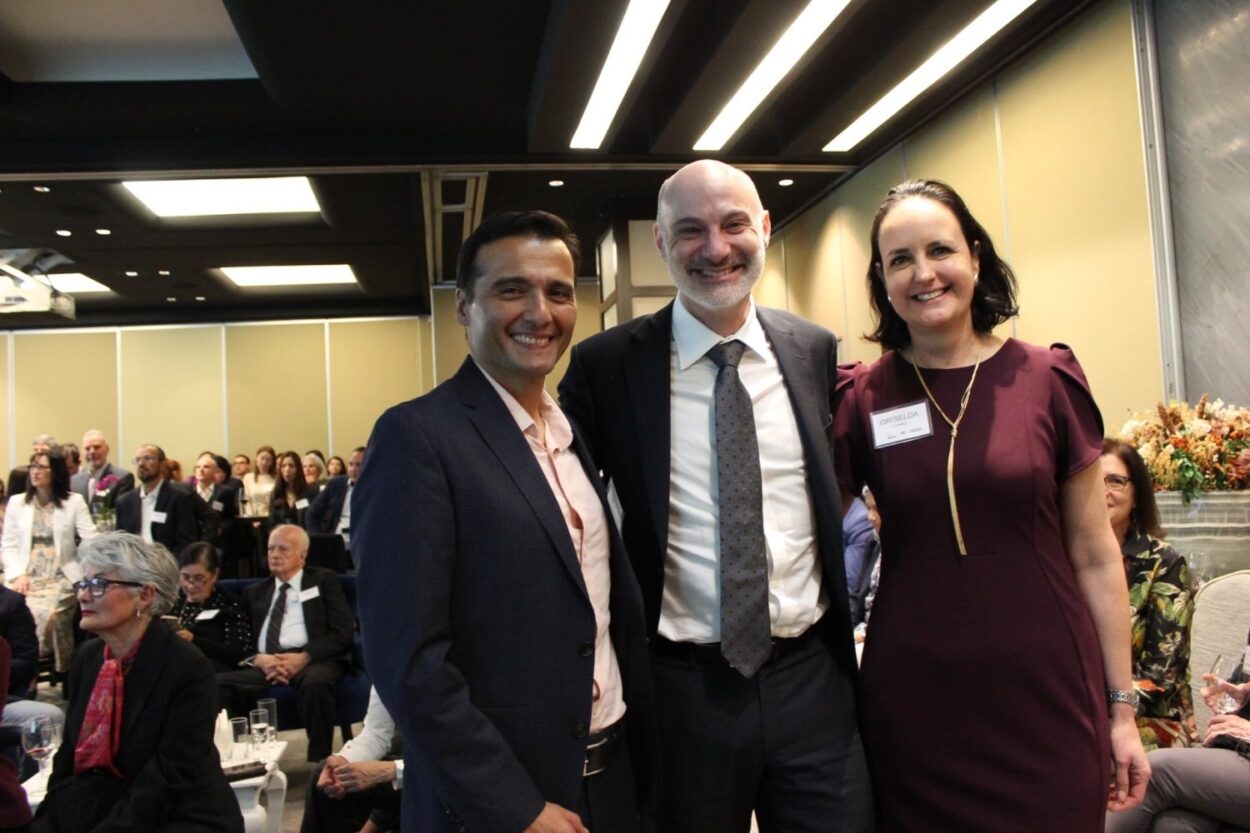Favianna Colón Irizarry spent last summer at Tecnológico de Monterrey, working alongside Mexican biotechnology researchers to develop a biodegradable coating that prolongs the shelf life of local foods. Assisting in this and other innovative projects at one of Mexico’s top research institutions was the opportunity of a lifetime, for sure. But, for Colón Irizarry, it’s the tapestry of experiences that accompanied her MIT-Mexico internship that will always resonate.
“From my internship, I gleaned a vital lesson: Cultural proficiency is indispensable,” she says.
A sophomore majoring in chemical-biological engineering, Colón Irizarry is among nearly 500 interns who have traveled to Mexico for a summer of work and study since the MIT-Mexico Program was launched by MIT International Science and Technology Initiatives (MISTI) in 2004. A flagship program within the Center of International Studies (CIS), MISTI offers tailored global experiential learning opportunities to more than 1,200 students each year.
MIT-Mexico has enlisted the support of over 200 host partners in Mexico during the course of its 20-year history.
“It started as one student in 2004 doing an internship. Now in the summer it’s around 30 interns,” says MIT-Mexico Program Director Griselda Gómez, adding that the program has also placed MIT students at Mexican high schools as temporary STEM teachers through 170 Global Teaching Labs since 2012.
As the program begins its third decade, both Gómez and Faculty Director Paulo Lozano point to the number of students MIT-Mexico has involved over the years — contributing to myriad cross-border research partnerships — as the program’s foremost achievement.
“I think the large number of students that have gone to Mexico is a great accomplishment,” says Lozano, a Tecnológico de Monterrey alumnus and now MIT’s Miguel Alemán Velasco Professor of Aeronautics and Astronautics.
He credits Gómez, director of the program since 2006, with the initiative’s overall success, including “being very careful that the places we send our students are safe.”
For her part, Gómez says accommodating the interests of Mexico-bound students across a wide spectrum of academic subjects and fields “is a personal mission for me.”
“If students want to go to Mexico, I really want them to go and have a great experience. If we don’t have a specific project (matching student interests), we will go and look for one,” she says. “It’s very personalized.”
While MIT-Mexico offers internships in MISTI’s designated “impact areas” of climate and sustainability, health, artificial intelligence, and social impact, over the years it has arranged summer internships in several other fields, including architecture, urban planning, agriculture, and aeronautics.
Last summer, for example, MIT-Mexico interns worked on initiatives ranging from research on the continued value of textiles and craft methods to projects investigating low-carbon affordable housing solutions and employing AI for financial literacy. Internship topics planned for this summer include Design of 6G Communication Systems for Smart Cities, based in Mexico City, and Automatically Assessing Patients for Refractive Surgery in the city of Querétaro.
All are designed to promote cross-cultural experiences and strengthen ties between Mexican and MIT students and faculty, while boosting education, innovation, and entrepreneurship in Mexico and developing and exposing MIT’s research outside the United States.
Beyond the long-lasting impact interns say the experience has had on their lives (Gómez reports several “love stories” and even marriages have resulted), “it’s also a connection between researchers in Mexico and researchers at MIT — collaborations that may lead to exciting collaborative research later on,” Lozano says.
Lozano is MIT-Mexico’s second faculty director, taking over about a decade ago from now-retired political economy professor Michael Piore, who helped found the program in response to a proposal from a group of Mexican students attending MIT. Gómez says MIT-Mexico is unique among MISTI programs in that students from the host country were the catalyst for forming it and MIT alumni in Mexico were largely responsible for the funding that got it off the ground. It was also MISTI’s first program in a Spanish-speaking country.
Learning and practicing how to speak Spanish “in real life” was a primary motivator for what Matt Smith now calls “one of the best decisions I could have made for myself.” Smith, a second-year computer science and engineering major, was among 35 students who spent their January Independent Activities Period in Mexico through the Global Teaching Lab program. Assigned to teach at a Mexico City high school, Smith says the language barrier gradually melted away — at least partially — over a three-week period in which he immersed himself in local museums, parks, and culture and was amazed and impressed by the number of peaceful gardens and natural areas throughout the bustling city.
Like Global Teaching Lab programs in other countries, the MIT-Mexico program aims to increase interest in STEM topics at host country schools. It matches MIT students with high schools in Mexico, and materials are adapted from MIT online resources to prepare tailored workshops on STEM subjects that complement the local school’s curriculum.
The third piece of MIT-Mexico is the provision of the MIT Global Seed Fund (GSF) grants administered through CIS. GSF promotes and supports early-stage collaborations among MIT researchers and their counterparts in Mexico. The program has awarded more than 50 such grants to over 100 researchers since 2012 to fund collaborative projects that can involve both MIT and Mexican students.
With his appetite whetted by the Global Teaching Lab, Smith came back from Mexico in January determined to apply for an MIT-Mexico internship this summer.
“I decided that three weeks wasn’t enough for me to fully digest the entire city — so why not go again?” says Smith, who was accepted and leaves in early June for a research position at the Instituto Politécnico Nacional in Mexico City.
“Being in another country made me realize how much I’d like to travel the world and see the experiences that other people are having,” he adds. “I highly recommend the experience for anyone looking to do something impactful in another country while exploring the best parts of the community.”
